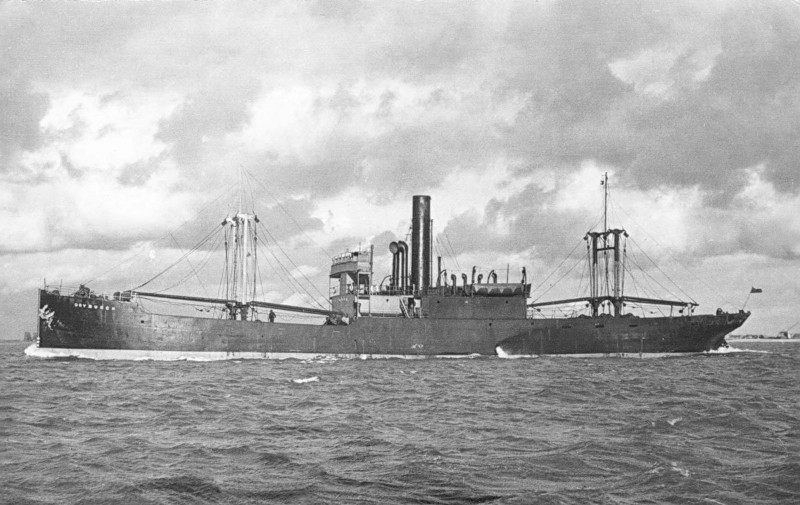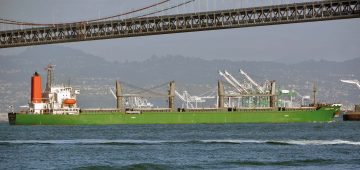Two Centuries in Shipping

George Gibson was born in 1758 at Leith and was in business as a shipbroker and ship’s agent in 1797 for services between Leith and Rotterdam before the year 1800. He became manager of the Leith, Hamburgh and Rotterdam Shipping Company in 1816 with a fleet of sailing ships operating to Continental ports. He became a shipowner in his own right four years later in 1820 with the galliot Isobella of 176 tonnes but she was lost two years later. On the dissolution of the managed Leith, Hamburgh and Rotterdam Shipping Company in 1844, he purchased two sailing ships from the defunct company to continue his shipowning career. The first steamer, Balmoral of 245 grt, was completed by Denny of Dumbarton in 1850, and was followed by nine more small steamers with names with royal connections during the next twenty years. The Firth of Forth in its outer reaches extends to a line from Dunbar to the Isle of May, and three Gibson vessels, the managed sailing ships Ant and Frankfort Packet, and the steamer Woodstock were to be stranded or lost between 1852 and 1893 in this area. The rock lighthouses of Inchkeith (1804), Bell Rock (1816), and Isle of May (1816) were all constructed by the legendary lighthouse builder Robert Stevenson to cut the toll of the lives of seafarers in this area.

In April 1870, a much larger steamer, Abbotsford of 1,035 grt was completed by Blackwood and Gordon of Port Glasgow to begin a long connection of Gibson names associated with the places, novels and characters in the great novels of Sir Walter Scott (1771-1832). My grandfather, Robert Middlemiss, hailed from Galashiels in the Borders and moved south as a young man of eighteen years to join the North Shields repair yard of Launcelot E. Smith, Chairman and Managing Director, and the Smith family, rising to become a senior foreman of Smith’s Dock Co. Ltd., the largest shiprepair yard in the world. My home is called Bemersyde, named after a house on a high ridge above Dryburgh Abbey, built in the year 1150 and the last resting place of Sir Walter Scott, as well as Field Marshal Earl Haig, British Army Supreme Commander in World War I. I thus have a great love of all things connected with the Borders and the novels of Sir Walter Scott. Gibson ships were often named with a Scott connection including Abbotsford, Amulet, Antiquary, Borthwick, Bucklaw, Glendinning, Redgauntlet, Guy Mannering, Lanrick, Nigel, Peveril, Quentin, Ronan, Talisman and Woodstock. Sir Walter Scott was famous for his Waverley novels of 1814 on Scottish history, but he also wrote novels based on English history e.g. Kenilworth and Ivanhoe in 1819/20.
George Gibson had died on 25th February 1855 and was succeeded by his son Mungo Campbell Gibson. Gibson steamers began to run regular cargo services between Leith and Rotterdam, Amsterdam, Harlingen, Antwerp, Ghent, Terneuzen, Delfyzl and Dunkirk. However, Abbotsford of 1870 was built for deep sea services to and from the Far East, and sailed in June 1870 through the newly opened Suez Canal to Singapore and on to China to load tea. She was followed to the Far East by Redgauntlet of 1,437 grt built in 1871 by Blackwood & Gordon, and a purchased steamer in 1874, which was renamed Guy Mannering of 2,817 grt. The first Gibson passengers were carried in 1883 on the steamer Anglia of 827 grt built in 1863 for the Dundee, Perth & London Shipping Company and purchased by Gibsons in 1883 for the Leith to Rotterdam trade. The new passenger and cargo steamer Mascotte of 1,094 grt joined in 1885 with accommodation for 62 passengers on the poop deck, and another purchased steamer, Britannia of 938 grt joined the passenger services in 1889. Mungo Campbell Gibson died on 23rd June 1890, and he was succeeded by his son Campbell Gibson.

Subscribe today to read the full article!
Simply click below to subscribe and not only read the full article instantly, but gain unparalleled access to the specialist magazine for shipping enthusiasts.





Comments
Sorry, comments are closed for this item